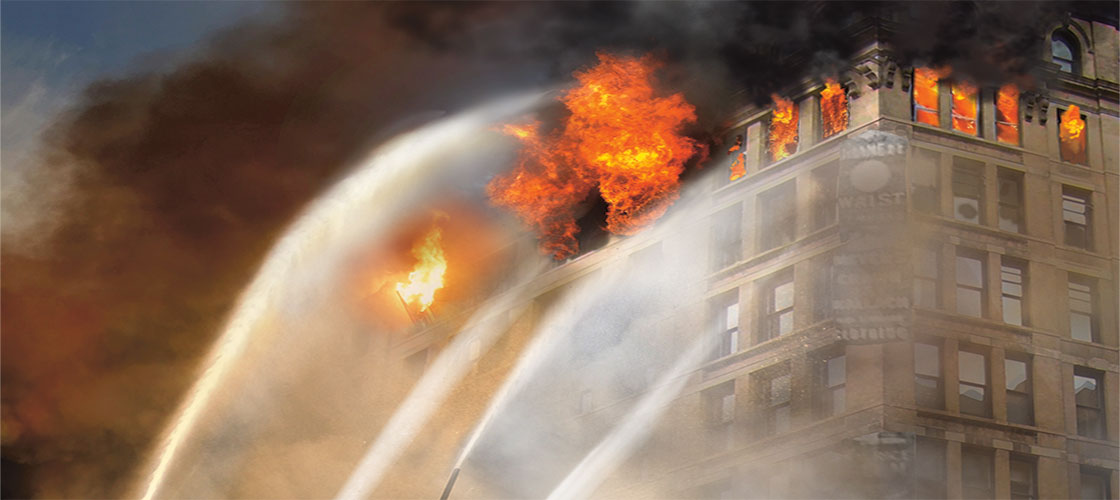Flames clawed at her back. Black smoke choked the air. Waves of red-hot fire curled across the room and licked up the walls.
It was March 25, 1911, and 17-year-old Katie Weiner was trapped on the ninth floor of a burning building in New York City.
Moments earlier, fire had broken out at the factory where Katie worked. Now the flames were spreading with lightning speed. With the fire swirling closer and closer, Katie had to make a terrible choice: Stay and die—or dive into a moving elevator and hope to survive.
She dove.
Early that morning, Katie had made her way through the streets of the Lower East Side, the neighborhood in New York where she lived with her mother, brother, and sister. It was unseasonably warm—a welcome relief after the bitter days of winter.
Katie was headed to the Triangle Waist Company, where she and her older sister Rose, 23, worked making shirtwaists—fashionable women’s blouses that were all the rage at the time. Like many teenagers in 1911, Katie did not go to school. She had to work to help support her family.
As always, the Lower East Side vibrated with life. Katie would have heard the clatter of horse-drawn wagons, the thunder of steel trains, the shouts of boys hawking newspapers. She would have seen laundry hung out to dry, flapping in the wind. And she would have smelled the scent of fresh bread wafting from bakeries.
Almost everyone on the Lower East Side had come from another country. In the early 20th century, hundreds of thousands of immigrants were streaming into the United States every year. Katie’s own family had come to New York City from Russia when Katie was about 5. They had faced violent religious persecution in their home country. And so, like others, they had come to the U.S. with the dream of freedom, with the dream of a better life.
To many immigrants, America seemed a place of hope, a land of plenty where jobs were as abundant as food, where anyone willing to work hard could get ahead. But newcomers swiftly learned that things were not nearly as rosy as they had expected.
Life was tough, especially on the Lower East Side. Families had to cram into tiny tenement apartments. Most worked long hours in dangerous jobs for little pay. Keeping food on the table was a constant struggle.
Flames clawed at her back. Smoke choked the air. Waves of fire curled across the room and up the walls.
It was March 25, 1911. Katie Weiner, 17, was trapped on the ninth floor of a burning building in New York City.
Moments earlier, fire had broken out at the factory where Katie worked. Now the flames were spreading fast. With the fire coming closer, Katie had to make a terrible choice: stay and die or dive into a sinking elevator and hope to survive.
She dove.
Early that morning, Katie had walked through the streets of the Lower East Side, the neighborhood in New York where she lived with her mom, brother, and sister. It was unseasonably warm, a relief after the bitter days of winter.
Katie was headed to the Triangle Waist Company. She and her sister Rose, 23, worked there making shirtwaists. These fashionable women’s blouses were all the rage at the time. Like many teens in 1911, Katie had to work to help support her family.
As always, the Lower East Side buzzed with life. Katie would have heard the clatter of horse-drawn wagons, the thunder of steel trains, the shouts of boys hawking newspapers. She would have seen laundry hung out to dry. She would have smelled fresh bread from bakeries.
Almost everyone on the Lower East Side had come from another country. In the early 20th century, hundreds of thousands of immigrants were coming to the United States every year. Katie’s own family had come to New York City from Russia when Katie was about 5. They had faced violent religious persecution in their home country—and so they came to the U.S. with the dream of a better life.
To many immigrants, America seemed a place of hope where jobs were abundant, where anyone willing to work hard could get ahead. But newcomers quickly learned that things were not as rosy as they had expected.
Life was tough, especially on the Lower East Side. Families lived in tiny tenement apartments. Most worked long hours in dangerous jobs for little pay. Keeping food on the table was hard.


